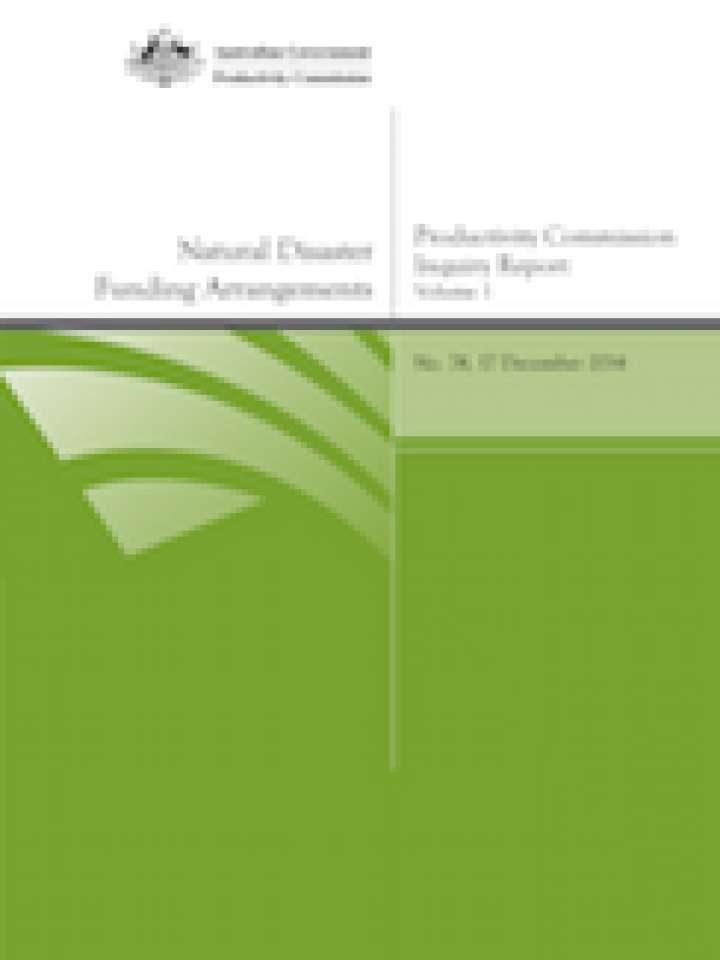Natural disaster funding: Productivity Commission inquiry report
This inquiry report looks at the efficacy of current national natural disaster funding arrangements in Australia, taking into account the priority of effective natural disaster mitigation and the reduction in the impact of disasters on communities. The report presents the Commission’s recommended reforms to achieve a more effective and sustainable balance of natural disaster mitigation, relief and recovery expenditure to build the resilience of communities within the context of the reform imperative in Australia. The report maintains that while some natural disasters are unforeseen and their impacts are unavoidable, in many cases the consequences of natural disasters can be mitigated. Similarly, better management of natural disaster risk by government can reduce the costs of natural disasters, including fiscal costs.
The report makes special emphasis on the locations where the need is greatest, having incurred the highest natural disaster costs in recent years. It states that high costs incurred in such areas like Queensland are not only a reflection of their higher hazard risk, but also of inadequate risk management, manifest in suboptimal land use planning, asset management planning and insurance of government assets. The natural disaster funding arrangements matter, not because of their fiscal impact per se, but because they impact on incentives for governments and the community to manage natural disaster risks. It continues that there is a long standing concern that governments under invest in mitigation and spend too much on recovery, leading to higher overall costs for the community.
This report was sent to Government on 17 December 2014 and publicly released on 1 May 2015.
Explore further
